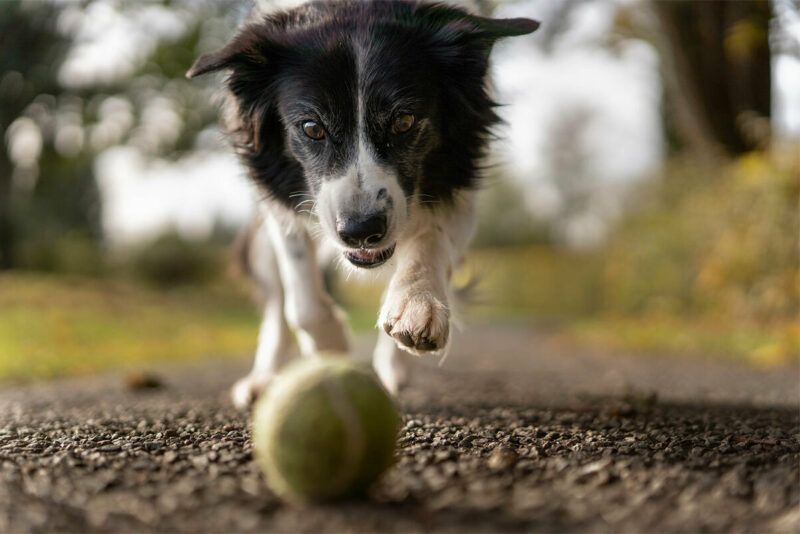Article Excerpt
Dogs love us unconditionally, but sometimes they decide to go on their own adventures. Here are some tips for keeping your dog safely in your own yard.
Dogs bring incredible amounts of joy into our lives. We feed them and give them a place to sleep, and in return, they show us unconditional love. Well, that’s how it works with most dogs. Some dogs have restless souls.
As much as they might love their humans, they cannot resist the allure of the world beyond the backyard fence. A human’s job is to keep their dog safe. Once a dog leaves the backyard, it could be in danger, whether it's from people, other dogs, coyotes, or your town’s animal control department.
Here are some tips on how to keep your dog in the yard. Ideally, you can do this by making the yard such a happy place that the dog never wants to leave. If that doesn’t work, you have options for shoring up your fence.
Learn how and why your dog is escaping.
Before you can dog-proof your backyard, you need to know why the dog wants to escape, and how it’s doing it. “Why” is the more difficult question, since you can’t just ask your dog to explain itself. Possibilities may include:
Loneliness or boredom: Your dog might be spending lots of time out there alone. It wants a friend, or it just wants something to do.
Territoriality: Your dog might think it needs to protect its home.
Prey drive: Dogs with a strong prey instinct might not let something like a fence come between them and a delicious squirrel.
Mating instinct: If your dog is unaltered, they may try to get out of the yard in order to, well, you know. Un-neutered males can be difficult to deter once they catch the scent of an un-spayed female.
Next, you need to know how your dog is getting out. It may or may not be obvious. The main methods are:
Climbing over the fence
Digging under the fence
Squeezing through gaps in the fence
Breaking through the fence altogether
Tips for Preventing Escape Attempts
Once you know how your dog is getting out, and what’s motivating it to do so, you can take action to keep it close to home.
1. Keep your dog active and engaged.
Not every escape artist dog needs major modifications to the backyard. Sometimes, a dog just needs more to do. Take your dog for a walk every day, or at least as often possible. Play with it in the backyard. Make the backyard a fun place that the dog enjoys. Even if this doesn’t stop the escape attempts, it’ll be good for both of you.
2. Block their view.
If your dog is escaping because it keeps seeing squirrels, cats, other dogs, or something else that gets it excited, try blocking its view. A higher fence or some tall plants can keep your dog from getting overstimulated.
3. Block them from climbing.
Large or particularly athletic dogs can be surprisingly good climbers. You can discourage this by removing any objects near the fence that might be helping them gain height. Tall shrubs or other plants can also help. Tilted fence extenders or coyote rollers can keep them from going over the fence, although they can also look rather penal.
4. Block them from digging.
Most fences stop at the ground. Enterprising dogs quickly figure out that if they can’t move the fence, they can move the ground underneath it. Options for dealing with a digger include:
Pouring a concrete footer along the base of the fence
Attaching an L-footer that faces inward
Adding dig barriers specifically designed for dogs and other animals

Photo by Helena Lopes from Pexels
5. Block them from chewing, pushing, etc.
Dogs may exploit any opening they see along a fence. If they find a gap, they may try to squeeze through. If the gap is too small, they’ll try to make it bigger. Sometimes, a motivated dog will chew through wooden fence pickets.
Regularly inspecting your fence for gaps, holes, and other openings is essential. Patch up any openings you find. If you have a highly motivated dog, you can add a second layer of fencing, whether it’s an entirely new fence or a layer of chicken wire.
6. Add accessories to your dog.
Small dogs and puppies are quite good at finding and slipping through small openings. A Puppy Bumper can make it harder for them to squeeze through. If you want to stop a larger dog from nosing around for gaps in the fence, you could try an e-collar, also known as the cone of shame.
7. Supervise your dog outside.
Some dogs love to relax in the sunshine for hours on end. Other dogs have not earned the right to remain outside unsupervised. If your dog has shown itself to be an escape artist, keeping an eye on it while it’s outside can keep it too busy to think of new ways to escape. Plus, just like when you take the dog for a walk, you’re spending time outside with your best friend. It’s a win/win.

Photo by Helena Lopes from Pexels
Learn more.
If you are looking for a home with a backyard that your dog will love, the home mortgage professionals at the Wood Group of Fairway can help you achieve your dreams. Get started on your free pre-approval today!





